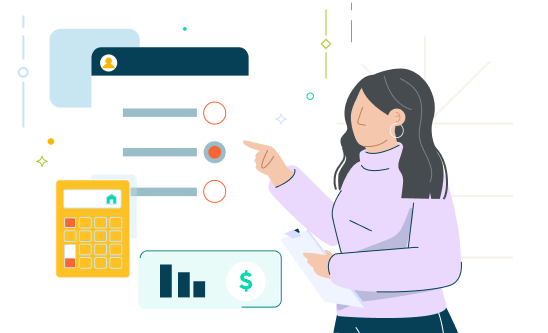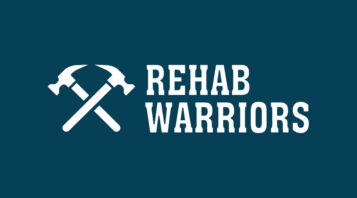
If you’re getting ready to buy, borrow, or refinance, you probably know what lenders want: proof that you’re likely to pay them back.
Their decision on your loan will come down to statistics. Whether or not you fit the profile of a good borrower depends on what you have in the bank, how steady your paycheck is, your history of paying back other loans, and your other debts.
The debt-to-income ratio is an important factor in any loan consideration—the lower your DTI, the better. Have a high DTI and wondering how to lower debt to income ratio?
In this guide, we’ll take a look at tricks to lower debt-to-income ratio so that you can create a solid budget and financial plan.
1. Start by Understanding Debt-to-Income Ratio
Your DTI measures the proportion of each monthly debt payment to your monthly income to determine your financial health and creditworthiness. Let’s start by calculating your current DTI ratio. This will tell you where you are right now, whether change is needed, and how much change to plan for.
To calculate your DTI, you’ll need to gather your current income amount and sources as well as your existing debt types and amounts. Keep the documentation handy.
How to Calculate Your Debt-to-Income Ratio
Grab a calculator and a scratchpad. Follow these steps:
- First, write down your gross monthly income—that’s what you earn before any taxes or other deductions are taken out.
- Next, add up the amount you pay on debts that require monthly loan payments, such as mortgage or rent, auto loans, student loan debt, and credit card payments (you can use the minimum required payment to figure this out).
- Divide your debt by your income.
- Multiply that figure by 100 to express the result as a percentage.
Let’s say you earn $6,000 per month before taxes—that’s your monthly gross income. You pay $400 on an auto loan, $200 on student loan debt, $1,600 for your monthly mortgage payment, and $800 on your credit card debt, which equals $3,000 in total monthly debt payments. Your DTI ratio is 50% (3000 ÷ 6000 = 0.5; 0.5 x 100 = 50).
What Is a Good Debt-to-Income Ratio?
What does that mean for you? 50% is a pretty high DTI ratio and will disqualify you for a mortgage, refinance, or personal loan with most traditional lenders.
Here are some general rules of thumb in understanding DTI numbers:
- 20% is an excellent level
- 36% is a good level
- 43% is acceptable but at the limit for most lenders
50% is the Federal Housing Administration (FHA loan) limit, and you’ll have to scramble to find any other high debt-to-income ratio mortgage lender.
2. Negotiate With Lenders
Every lender will tell you that they’d rather have you call and tell them what’s going on than default on your debt. If you’ve already fallen behind on your payments, it’s important to remedy the situation as soon as possible. Even if you’re up-to-date on your debt, it never hurts to ask for new terms.
Call the customer service number on the back of your card and:
- Tell them you’re having trouble making payments and ask if they can help
- Ask if they will forgive past fees and penalties
- Inquire about temporary deferral or lower monthly minimum payments
- Stay calm and pleasant, and if you hear a “no,” ask to speak to a supervisor
- Make a note of names, dates, and details of your call
- Request an emailed or mailed copy of any new terms or changes to your debt
Many lenders have hardship plans in place, and they may also agree to additional help such as fee forgiveness when you request it. Negotiating with lenders is a key part of how to lower debt-to-income ratio.
3. Work With a Credit Counselor
A credit counselor helps consumers navigate current debt and create a plan to pay off loans in a way that makes the most sense. This can include a goal of lowering total interest paid, getting out of an endless debt cycle, and lowering monthly payments (which will lower your DTI ratio).
Nonprofit credit counseling organizations are funded by grants from credit companies, which means you’ll pay no fees if you qualify by having over $5,000 in unsecured debt. They can help:
- Set up a debt management plan with payments you can afford
- Negotiate with creditors to reduce APR and stop penalties and fees on your accounts
- Eliminate contact from collectors—your counselor will act as an intermediary
- Teach you more about credit and budgeting
4. Apply for Loan Consolidation
What if you are paying off multiple credit cards with varying interest rates and high fees, but you don’t qualify for a debt management plan?
A debt consolidation loan may be an option. In this case, you’ll work with a lender to come up with a single monthly payment that fits your budget. Many lenders will take care of handling all further negotiations with your creditors.
Personal loans for high debt-to-income ratio generally come with a lower interest rate than credit cards. Plus, you’ll have a consistent payment plan with a set end goal rather than continue to juggle minimum payments that endlessly extend your debt.
As with other loans, your interest rate will depend on your income, credit score, assets, and other financial history.
You can find loan consolidation calculators and round-ups of the best lenders and offers online. Some may also consider a home equity loan for debt consolidation.
5. Reduce Your Student Loans
If student loans are taking a big bite out of your monthly funds, there are several ways to request help. For federal loans, these include:
- Consolidation – Consolidate multiple federal student loans into a single Federal Direct Loan. While it may extend the life of the loan (and the total amount of interest you pay), it can provide relief by lowering your monthly debt payment and potentially locking in a lower interest rate.
- Reduced payments – Under a Federal Direct Loan, you can apply for either income-based payments or Pay as You Earn (PAYE) plans if you’re struggling financially or have a large family. In addition to reduced monthly student loan payments (and thus a reduced DTI ratio), you may end up with loan forgiveness after 20 or 25 years instead of paying the entirety of the owed amount.
- Deferment – You can request deferment to temporarily stop your monthly payments for up to three years each based on either unemployment or economic hardship. While this only postpones loan repayment, it can lower your DTI ratio immediately by removing that amount from your current monthly debt.
- Forbearance – This is a final step before defaulting on the loan. It entails telling the government there’s no way you can repay it as is. This can result in lower monthly payments and/or some degree of loan forgiveness if you can prove your financial situation merits it. Be wary of the pros and cons of mortgage forbearance before you consider this option.
Some of these options are available for private student loans to a limited degree. Check with your lender and explain what your situation is to find out how they work with borrowers who need to lower their monthly payments.
6. Pay Down Debt With Home Equity
If you’re a homeowner with equity built up in your property, consider looking into those options now to help improve your financial future rather than waiting until you sell your home or leave it to heirs. For example, you can refinance your home to pay off debt faster.
7. Change Your Spending Habits
There’s no amount of cleaning up your current debt that will help in the long run without having a solid plan going forward. Understanding debt-to-income ratio and calculating your own is an excellent start to basic financial planning.
Be sure you also have a comfortable handle on:
- Your current debts, monthly payments, and total interest paid on loans
- Categorizing wants versus needs and how to prioritize both
- Monthly spending in cash and other ways that are less trackable than bills
- Setting savings goals and how to fund short and long-term savings
- Your short-term emergency savings—how much you need and how to set it aside
- Understanding interest rates and compound interest
Changing spending habits could mean that you’re freeing up cash to make additional debt payments. This can help you pay off existing debt much faster.
8. Increase Your Wages
It’s not as easy as wishing it so, but just like lenders don’t want you to default, employers generally don’t want you to leave or feel you’re being treated unfairly. A plan to up your monthly income may include:
- Ask for a raise—put together a pitch that covers why you’re worth it
- Find out if you can expand your current role or move to a new role at a higher salary
- Update your resume and LinkedIn profile and start a job search to see what’s out there
- Let your current employer know if you’ve received an offer and see if they’ll match it
9. Generate Secondary Income
Another way to make additional debt payments is to have a second stream of income. We’re living in the age of the side hustle and the gig economy—what opportunities are out there for you to earn a side or supplemental income?
Possibilities include:
- Take freelance jobs based on skills used in your current employment
- Start a home-based side business making use of family talents or assets
- Sell goods you create or customize
- Put collections or items you’ve accumulated over time on sale
- Teach arts, domestic, movement, or other local community education courses
- Record video courses for online learning outlets to teach technical and business skills
Side hustles are a way of life for many adults these days, so brainstorm with your friends and family on how you could add to your monthly income.
Ready to Lower Your Debt-to-Income Ratio With Home Equity?
For many of us, homeownership is both our biggest investment and biggest monthly expense. But most homeowners don’t realize that their home is an available asset that they have the right to access on their terms—not just when the property changes hands.
If you’re struggling with debt or how to lower your debt-to-income ratio, a sale-leaseback program can help provide a plan that converts your home equity to cash to help you meet your current needs and financial goals. If you’re interested in learning more, reach out to a financial advisor to discuss your options.
Key Takeaways
Your debt-to-income ratio is an important factor in any loan consideration, whether that’s a home loan, car loan, or personal loan. If you implemented our tips on how to lower your debt-to-income ratio but you still aren’t qualifying for a traditional financial solution, look into how you can convert your home equity into cash with a sale-leaseback program. As always, we recommend consulting your financial advisor to help you figure out what will work best for you and your needs.
Sources:
- Debt.com. Credit Counseling. https://www.debt.com/credit-card-debt/counseling/
- The Balance. Student Loan Payment Options. https://www.thebalance.com/student-loan-payment-options-2386011



















